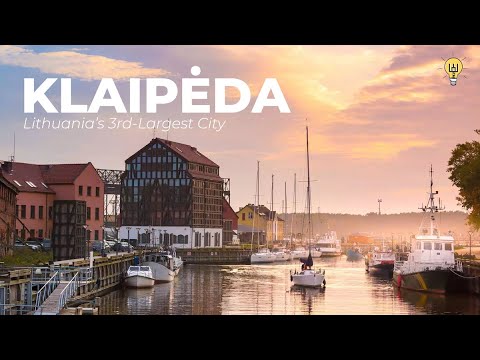
Nestled on the Baltic coast, Klaipėda, Lithuania’s third-largest city, stands as a vibrant testament to the country’s rich history and cultural diversity. Often overshadowed by its larger counterparts Vilnius and Kaunas, Klaipėda is a hidden gem that offers a unique blend of old-world charm and modernity, making it an intriguing destination for travelers and an important hub for locals.
#### Historical Backdrop
Klaipėda’s history is as captivating as its landscape. Founded in the 1250s by the Teutonic Knights, the city was initially named Memel. Over the centuries, it has been under various dominions, including Prussian and German rule until it became part of Lithuania in 1923 following the Treaty of Versailles and again after World War II.
This rich historical tapestry is visible in its architecture and museums. The city’s past is well preserved in the Klaipėda Castle site, which now hosts archaeological exhibitions and historical festivals that vividly bring its medieval roots to life.
#### Cultural Vibrancy
Klaipėda is distinguished not only by its history but also by its lively cultural scene. The annual Klaipėda Sea Festival attracts visitors from across Europe with its parades, concerts, and maritime events, celebrating the city’s longstanding relationship with the sea.
Theatre enthusiasts are drawn to the Klaipėda State Music Theatre which offers a repertoire of opera, ballet, and musical performances. Meanwhile, art lovers can explore contemporary art at the Klaipėda Culture Communication Center (KCCC) which showcases works from both Lithuanian and international artists.
#### Architectural Heritage
Walking through the Old Town offers a journey back in time with cobbled streets lined with quaint half-timbered houses reminiscent of Germany’s influence. The Theatre Square with Simon Dach Fountain serves as a central meeting point where various architectural styles converge—from Gothic to Baroque.
Additionally, Meridianas ship anchored in Dane River since 1948 now functions as a restaurant. This preserved sailing vessel symbolizes Klaipėda’s maritime heritage while serving as one of its most iconic landmarks.
#### Economic Significance
Economically speaking, Klaipėda plays an essential role both nationally and throughout the Baltic region due to its strategic seaport—the largest in Lithuania. This port not only enhances commercial trade but also contributes significantly to transportation logistics connecting sea routes across Northern Europe.
The presence of numerous international companies working alongside thriving local businesses underscores Klaipėda’s importance as an economic engine within Lithuania contributing robustly towards employment opportunities and technological advancements.
#### Natural Attractions
Klaipėda’s proximity to nature adds another layer to its appeal; it serves as a gateway to Curonian Spit National Park—a UNESCO World Heritage Site known for shifting sand dunes similar to desert landscapes oddly juxtaposed against lush pine forests. Visitors here enjoy serene walks along pristine beaches or cycling through scenic trails that offer unforgettable views across both sides of this unique sliver of land between Curonian Lagoon and Baltic Sea.
#### Conclusion
With a compelling mix of historic sites driven by tales from centuries past combined with vibrant cultural expressions plus economic vitality fueling dynamic urban growth — all set against stunning natural backdrops — Klaipėda remains not just Lithuania’s third-largest city but also one of its most enchanting ones worth discovering whether you’re planning your next travel adventure or exploring potential business opportunities within Europe.
